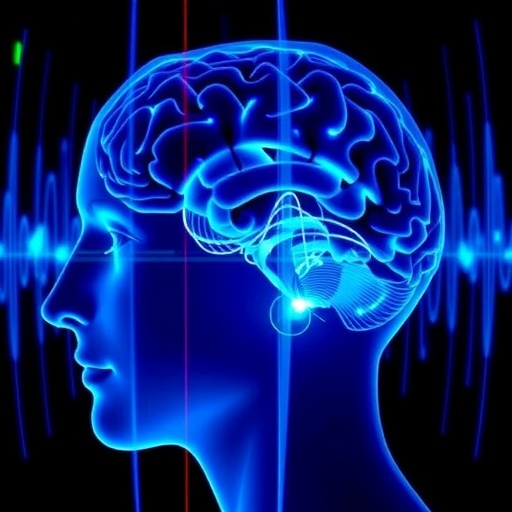In the relentless pursuit of advancing brain–computer interface (BCI) technologies, a recent breakthrough leverages deep learning and neurophysiological insights to dramatically enhance the decoding of high-speed steady-state visually evoked potentials (SSVEPs). These SSVEP-based BCIs represent a significant leap forward in enabling intuitive, rapid communication between human brains and external devices, including spellers and prosthetic limbs. However, despite the enthusiasm surrounding SSVEP-BCIs, their practical deployment has been hampered by the dual challenges of data scarcity and the inherent complexity of EEG signals.
Collecting ample electroencephalogram (EEG) data necessary for training robust deep learning models remains a formidable obstacle due to the time-intensive, costly nature of EEG acquisition and the limited availability of subjects. This data sparsity frequently results in overfitting of models, undermining their generalizability and real-world performance. Simultaneously, the multi-dimensional intricacies of EEG signals, which encompass rich temporal, spatial, and frequency components, pose significant challenges for traditional machine learning frameworks such as convolutional neural networks (CNNs). CNNs, while potent, struggle to fully capture the dynamic and temporally dependent features of EEG, particularly when constrained to limited, short-duration datasets.
Addressing these intertwined issues, scientists have pioneered an innovative dual approach that marries neurophysiological data augmentation with a Transformer-based decoding architecture. This fusion promises not only to enrich training datasets meaningfully but also to unlock the full spectrum of EEG signal information for improved SSVEP detection. The first cornerstone of this advancement is Background EEG Mixing (BGMix), a data augmentation technique inspired directly by the physiological composition of EEG signals.
Unlike conventional methods such as Mixup that generate synthetic data by arbitrarily blending examples, BGMix delicately disentangles SSVEP signals into their stable, task-related core and variable, background noise components. By systematically swapping background EEG noise between trials belonging to different stimulus classes, BGMix synthesizes novel training samples that preserve the essential visual stimulus-evoked features while introducing genuine variability representative of natural EEG dynamics. This mechanism ensures augmented data remain bio-realistic, significantly mitigating risks of generating implausible or misleading EEG patterns.
The second pivotal innovation is the Augment EEG Transformer (AETF), a highly specialized Transformer-based architecture constructed explicitly for EEG signal decoding. AETF synergistically integrates multiple processing stages tailored to unravel the multidimensional attributes of SSVEPs. Initially, a fully connected layer acts as a spatial filter, adept at discerning electrode-specific variations that are critical for isolating brain activity patterns. This is followed by a convolutional layer engineered to emphasize frequency components fundamental to SSVEP stimuli, enhancing the model’s sensitivity to pertinent rhythmic neural oscillations.
Crucially, the architecture incorporates a two-layer Transformer encoder, whose self-attention mechanism excels at capturing long-range temporal dependencies within the EEG data. This design preserves temporal dynamics that conventional CNNs tend to obscure through pooling operations, thereby optimizing the extraction of time-sensitive features essential for rapid, accurate decoding. The attention mechanism grants AETF the ability to focus computational effort on the most informative temporal segments, bolstering performance especially when training data is scarce.
The combined application of BGMix and AETF culminates in a robust framework that substantially narrows the gap between research potential and real-world usability of SSVEP-BCIs. For individuals reliant on BCIs—such as patients with motor disabilities—this advancement portends far more reliable and swift communication avenues, effectively transforming assistive technology paradigms. Additionally, cognizant of practical deployment constraints, the research team employed knowledge distillation to create a compressed variant of the model, termed AETF_1layer.
This streamlined model variant achieves a remarkable balance, retaining 95–98% of the predictive capabilities of the full AETF model while slashing computational overhead. Such efficiency gains are paramount for embedding BCI systems into portable, low-power devices, thus expanding accessibility beyond laboratory environments. Looking forward, the team envisions enriching this architecture by incorporating multimodal inputs, including eye-tracking data, and applying transfer learning techniques. These enhancements aim to broaden the applicability of AETF across various BCI modalities and heterogeneous subject groups, steering towards universally deployable brain–machine interfaces.
This breakthrough research was undertaken by a multidisciplinary collaboration involving Jin Yue, Xiaolin Xiao, Kun Wang, Weibo Yi, Tzyy-Ping Jung, Minpeng Xu, and Dong Ming. Their collective expertise bridges the complex landscape of neural engineering, machine learning, and biomedical signal processing.
Financially bolstered by major funding agencies, including China’s STI 2030-Major Projects and the National Natural Science Foundation of China, this work signifies a milestone in EEG decoding methodologies. Their findings, detailed in a paper titled “Augmenting Electroencephalogram Transformer for Steady-State Visually Evoked Potential-Based Brain–Computer Interfaces,” were published in the esteemed journal Cyborg and Bionic Systems on October 7, 2025.
Beyond technical prowess, this work underscores the profound societal impact of next-generation BCIs, heralding a future where the brain seamlessly interfaces with technology, enhancing quality of life for millions. The innovative BGMix and AETF framework represents a paradigm shift, harnessing both the subtle physics of brain signals and cutting-edge AI architectures, potentially catalyzing a new era in neurotechnology.
Subject of Research: Advanced EEG decoding techniques for SSVEP-based brain–computer interface systems using deep learning and neurophysiologically informed data augmentation.
Article Title: Augmenting Electroencephalogram Transformer for Steady-State Visually Evoked Potential-Based Brain–Computer Interfaces
News Publication Date: October 7, 2025
Web References: DOI: 10.34133/cbsystems.0379
References: Research paper published in Cyborg and Bionic Systems
Image Credits: Minpeng Xu, Academy of Medical Engineering and Translational Medicine, Tianjin University
Keywords: Applied sciences and engineering, Mathematics, Physical sciences




